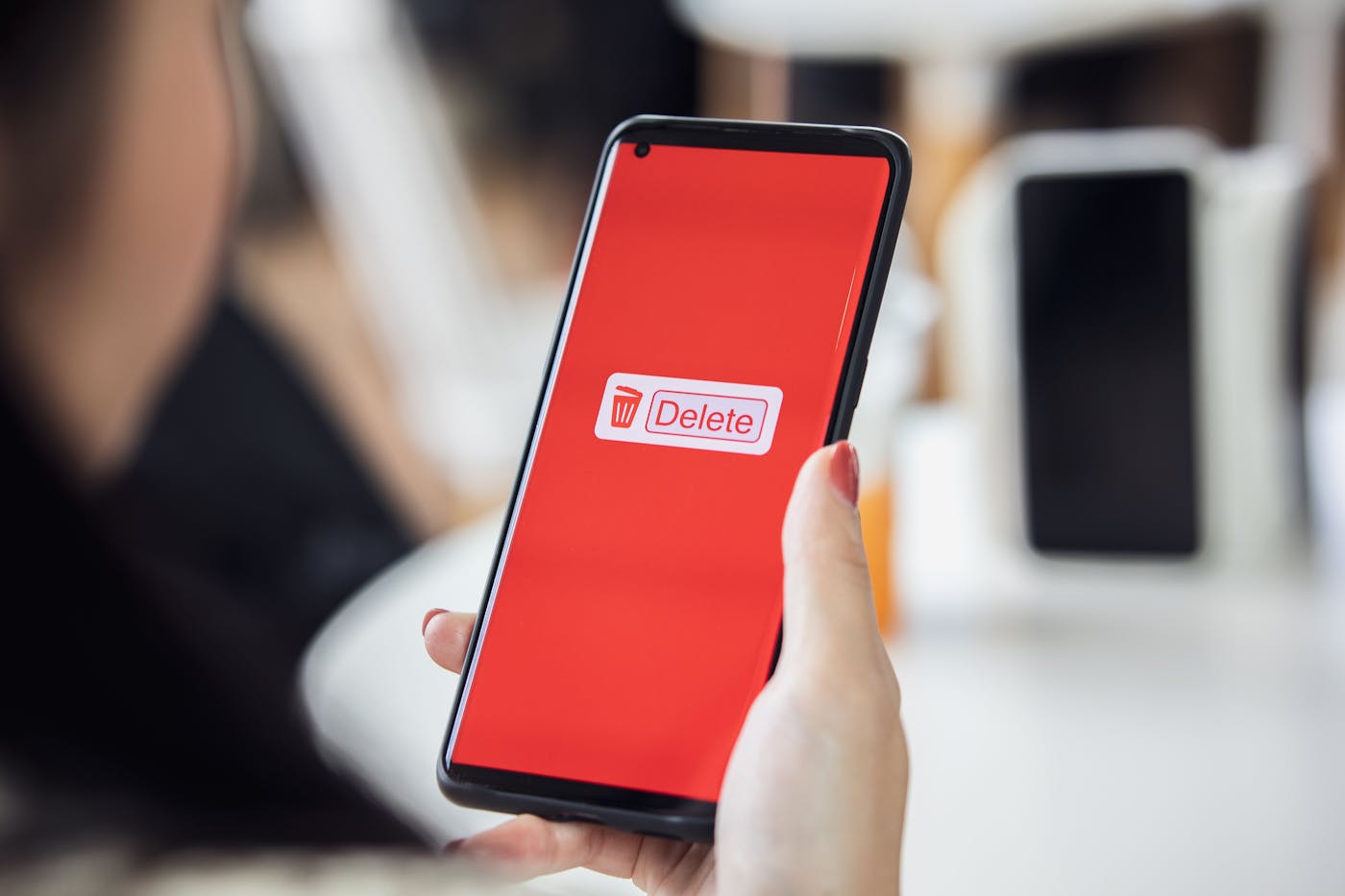Scams on Instagram
As one of the most popular apps in the world today, it’s hardly surprising that Instagram has also become a vector for any number of internet scams. Instagram scams have proliferated in recent years, causing financial loss and emotional distress to unsuspecting users. In this blog, we'll shed light on some of the most common Instagram scams, and offer tips on how to protect yourself from falling victim to them.
The allure of Instagram scams: How Instagram scammers operate
Instagram's user-friendly environment and emphasis on visuals make it an ideal playground for scammers seeking to exploit individuals' trust and curiosity. These social media scams can take various forms, targeting users through fake accounts, misleading posts, and enticing offers. Their techniques often involve exploiting psychological triggers, using misinformation, and taking advantage of the platform's features.

Instagram scamming tactics may include impersonating legitimate users, brands, celebrities, or influencers, most likely using fake profile pictures to gain trust and credibility. Engagement clickbait is another tactic, encouraging users to engage with their posts through likes, comments, shares, and follows, and increasing the visibility of their posts and accounts. Scammers may also share links that lead to malicious websites hosting malware or phishing pages. These links can compromise users' devices or steal sensitive information.
Fake brand collaborations are another Instagram scam technique, with scammers impersonating brands or influencers and approaching users with fake collaboration offers, and promising payment or free products in exchange for personal information or upfront fees. Additionally, scammers may set up fake online stores advertising trendy products at unbelievably low prices. Users who make purchases will receive either low-quality items or nothing at all.
Scammers may also exploit hashtags - they use popular and trending hashtags to increase the visibility of their posts and lure users to search for related content. Romance scams are also on the rise - scammers create fake profiles to establish emotional connections with users. Over time, they manipulate victims into sending money or personal information under the guise of a romantic relationship.
Scammers on Instagram: What might an Instagram scam message look like?
An Instagram scam message can take various forms, but they often share certain characteristics that are intended to deceive and manipulate users into taking specific actions. Subject headings make include words like “Urgent!” or “Account Verification Required” - and the email may claim to have detected suspicious activity on your Instagram account that you need to take care of right away before your account is shut down. There are a few indicators that a message is likely a scam:
- Urgency: The message creates a sense of urgency by claiming that there's suspicious activity and that your account will be suspended if you don't act quickly.
- Impersonation: The message purports to come from the "Instagram Support Team," using official language to appear legitimate. Scammers often try to mimic the language and appearance of official communications.
- Malicious link: The link provided leads to a suspicious domain that is not the official Instagram website (instagram.com. Clicking on a suspicious link could potentially lead to a phishing site designed to steal your login credentials.
- No personalization: Scammers often use generic greetings (e.g. "Dear [Your Username]") instead of addressing you by your actual name.
- Lack of verification: Legitimate communications from Instagram would never ask you to verify your account through a link in a message. They would typically provide instructions on how to verify through official channels within the app.
Scammers constantly adapt their tactics, so the appearance of Instagram scam messages may vary. If you receive a message that requests personal information, payment, or immediate action, treat it with caution: always verify the authenticity of the message through official channels, avoid clicking on suspicious links, and report any suspicious activity to Instagram.
Instagram DM scams
Some of the scamming techniques mentioned above are carried out through posts and ads - others are targeted at the user through direct messaging. An Instagram DM (direct message) scam is a type of fraudulent activity that occurs through private messages on the Instagram platform. Scammers use these direct messages to deceive and manipulate users into taking actions that can result in financial loss, identity theft, or other negative consequences.
Instagram DM scams target users' trust and curiosity, leveraging the personal and private nature of direct messages to trick individuals into sharing sensitive information, clicking on malicious links, or falling for various fraudulent schemes. There are a few common types of Instagram DM scams, including phishing scams, money transfer scams, fake giveaway scams, romance scams, and investment scams. Scammers may also send links to malicious websites or files through DMs. These links can lead to malware downloads that can compromise users' devices and steal sensitive information. We’re going to take a look at what some of the most prevalent scams are, and how they work.

Instagram phishing scam
An Instagram phishing scam is a type of online fraud where scammers use deceptive tactics to trick users into revealing their sensitive information, such as login credentials, personal details, or financial information. These scams are designed to resemble legitimate communications from Instagram or other trusted sources, but they are actually attempts to steal your data and potentially gain unauthorized access to your account. Instagram phishing scams typically involve the following steps:
- Fake communication: Scammers send users messages that appear to come from Instagram's official accounts, support team, or other trustworthy sources. These messages can arrive through direct messages, comments, or emails.
- Urgent or alarming content: The messages often create a sense of urgency, claiming that there's a problem with your account, security breach, or some other issue that requires immediate attention. Scammers may say your account has been suspended, compromised, or needs verification.
- Link to fake websites: The message will usually contain a link that directs you to a website that looks like Instagram's official site but is actually a well-crafted replica. This is where the scam takes place.
- Data collection: The fake website will prompt you to enter your login credentials (username and password) to verify your account or fix the alleged problem. The moment you enter your information, the scammers gain access to your account.
- Stolen information: Once scammers have your login details, they can take control of your account, use it for malicious activities, or gain access to your personal information.
Instagram money scam
Scammers might reach out with offers for lucrative job opportunities, investment opportunities, or "get rich quick" schemes. They may ask for an upfront fee, personal information, or an investment, but they have no intention of delivering on their promises. There are some clues to watch out for to help you recognize an Instagram money scam:
- Unrealistic promises: An extravagant investment guarantee or unrealistic promise of incredibly high returns is often a red flag for investment scams.
- Pressure to act quickly: Scammers use urgency to prevent you from thinking critically and researching further - messages that create a sense of urgency by implying that you're missing out on a limited-time opportunity are another red flag.
- Unsolicited approach: If the sender approaches you out of the blue, often without any prior interaction, this could be another clue that the message is a scam, as legitimate investment opportunities are rarely offered in this manner.
- Lack of information: The message may be vague about the actual investment strategy or company details. Scammers avoid providing concrete information to prevent you from verifying their claims.
- Request for personal information: The scammer requests your email address, which could potentially be used to send phishing emails or spam.
- No regulatory information: Legitimate investment opportunities are usually regulated and require proper documentation. The lack of information about regulatory compliance is a warning sign.
- Too good to be true: The promise of extremely high returns with minimal investment and risk is a classic indication of a scam. Genuine investment opportunities involve risk and typically offer more realistic returns.
If you come across such a message, exercise caution and conduct thorough research before making any financial decisions. Avoid responding to unsolicited investment offers on social media, especially if they promise unrealistic returns. Legitimate investments require due diligence, verification, and an understanding of the risks involved. If an offer seems too good to be true, it's likely a scam, and you should steer clear to protect your financial well-being.
Fake giveaways on Instagram
A fake giveaway scam on Instagram is a deceptive scheme where scammers pose as individuals, brands, or influencers offering enticing giveaways or contests to attract users' attention and engagement. These scams exploit users' desire to win free prizes or rewards, and they often aim to collect personal information, gain followers, or drive traffic to malicious websites.
Scammers may create a visually appealing post that showcases an extravagant prize, such as high-end gadgets, luxury vacations, designer fashion items, or cash rewards. The post may feature eye-catching graphics, professional design, and impressive descriptions. The scammer includes captions that encourage users to participate by following the account, liking the post, and tagging friends in the comments. These actions increase the post's visibility and engagement.
To enter the giveaway prize draw, users are directed to click a link provided in the caption or bio. This link might lead to a website or external form that asks for personal information - including sensitive information like bank details or Social Security numbers. Scammers claim this information is necessary to confirm the winner or deliver the prize.
In some cases, scammers might ask users to share the post on their own profiles or stories to increase the giveaway's reach. This tactic not only spreads the scam but also makes it seem more legitimate due to the widespread sharing. Once users provide their information or complete the required actions, scammers either disappear or announce a fake winner who doesn't actually receive the promised prize. Users who participated are left disappointed and with their personal information compromised.
Spam accounts on Instagram
Many Instagram scams are carried out using spam accounts. A spam account on Instagram refers to an account that engages in various forms of unwanted and often deceptive activities on the platform. These accounts typically have the intention of promoting certain content, products, services, or links for personal gain, while disregarding the authentic and meaningful interactions that users expect on the platform.
Spam accounts on Instagram can take different forms and engage in a variety of behaviors:
- Follower farming: Some spam accounts follow a large number of users in the hope of gaining reciprocal follows. They often use automated tools to follow and unfollow users rapidly, aiming to increase their follower count without genuinely engaging with content.
- Inauthentic engagement: These accounts may excessively like, comment, or share content in an automated and indiscriminate manner to gain attention and visibility.
- Link sharing: Spam accounts on Instagram often share links to malicious websites, phishing sites, or low-quality content that they want users to visit. These links may lead to scams, malware, or other harmful online activities.
- Fake giveaways: Some spam accounts host the fake giveaways described above to attract users' attention and encourage them to follow, like, or comment on their posts, and ultimately collect personal information or drive traffic to specific websites.
- Stolen content: Spam accounts may repost content from other users without permission, often without proper attribution. This practice can negatively impact the content creators' visibility and engagement.
- Bot comments: These accounts use automated bots to leave generic or unrelated comments on users' posts. These comments are often easy to identify as they don't genuinely engage with the content.
- Impersonation: Some spam accounts impersonate celebrities, influencers, or brands to gain followers and deceive users. They may use similar usernames, profile pictures, and content to mimic the authentic account.
- Phishing: Spam accounts may send messages to users, claiming to be from Instagram or other official sources, and ask for sensitive information like login credentials or personal details.

Instagram takes measures to combat spam accounts by using algorithms to detect and remove them. Users can also report spam accounts to help keep the platform clean and safe. To avoid falling victim to spam accounts on Instagram or their activities, users should be cautious when interacting with unfamiliar accounts, especially those with few posts, low engagement, and suspicious content. It’s also a good idea to regularly review and manage your followers list to remove any suspicious accounts.
Guarding Against Instagram Scams: Tips for Users
While Instagram scams can be sophisticated, there are several measures you can take to protect yourself from falling prey to these deceptive schemes:
- Exert caution with links: Avoid clicking on suspicious links in direct messages or comments. Hover over any links in messages to see the actual URL they lead to. If the link doesn't match Instagram's official domain (instagram.com), it's likely a phishing attempt.
- Double-check brand collaborations: If you receive an influencer collaboration offer, research the brand and cross-reference the information with official sources. Legitimate brands will not ask for upfront payments or excessive personal information.
- Shop wisely: Only purchase products from reputable online stores. Be skeptical of deals on Instagram that seem too good to be true, and research the seller's reputation and reviews before making a purchase.
- Verify sender: Always double-check a sender's account: Check out the consistency of their engagement, and that they have a significant number of followers. Legitimate communications from Instagram will come from accounts with a verified blue badge next to their name. However, scammers can also mimic these badges, so it's essential to be cautious.
- Don't share sensitive information: Never share your login credentials, personal information, or financial details through messages, especially if you didn't initiate the communication.
- Use official channels: If you receive a message claiming to be from Instagram, verify the information by visiting the official Instagram website or app directly, rather than clicking on any links.
- Enable two-factor authentication (2FA): Turn on 2FA for your Instagram account. This adds an extra layer of security by requiring a verification code in addition to your password when logging in.
- Report suspicious activity: If you encounter a phishing attempt, report the account or message to Instagram. This helps protect other users from falling victim to the same scam.
Instagram's popularity and user-friendly interface have made it an attractive platform for scammers to exploit unsuspecting users. By being vigilant, verifying account authenticity, and practicing caution when engaging with offers and messages, you can reduce the risk of falling victim to Instagram scams. Your online safety is in your hands, and staying informed is the first step toward a secure digital presence.
Instagram scammer messages often rely on emotional manipulation and urgency to get users to act quickly - so you should always approach messages requesting sensitive information or offers that appear too good to be true with a healthy dose of skepticism. Research the situation thoroughly before taking any action: If you suspect an Instagram DM may be a scam, it's better to be cautious, trust your instincts, and not engage further.
If you suspect your personal information may have been compromised, it’s recommended to use a Dark Web monitoring tool, one of Mozo's features, will alert you if your data has been breached. For more information on personal online security and privacy, including products that help protect your private details and your device, visit GetMozo.com.


















